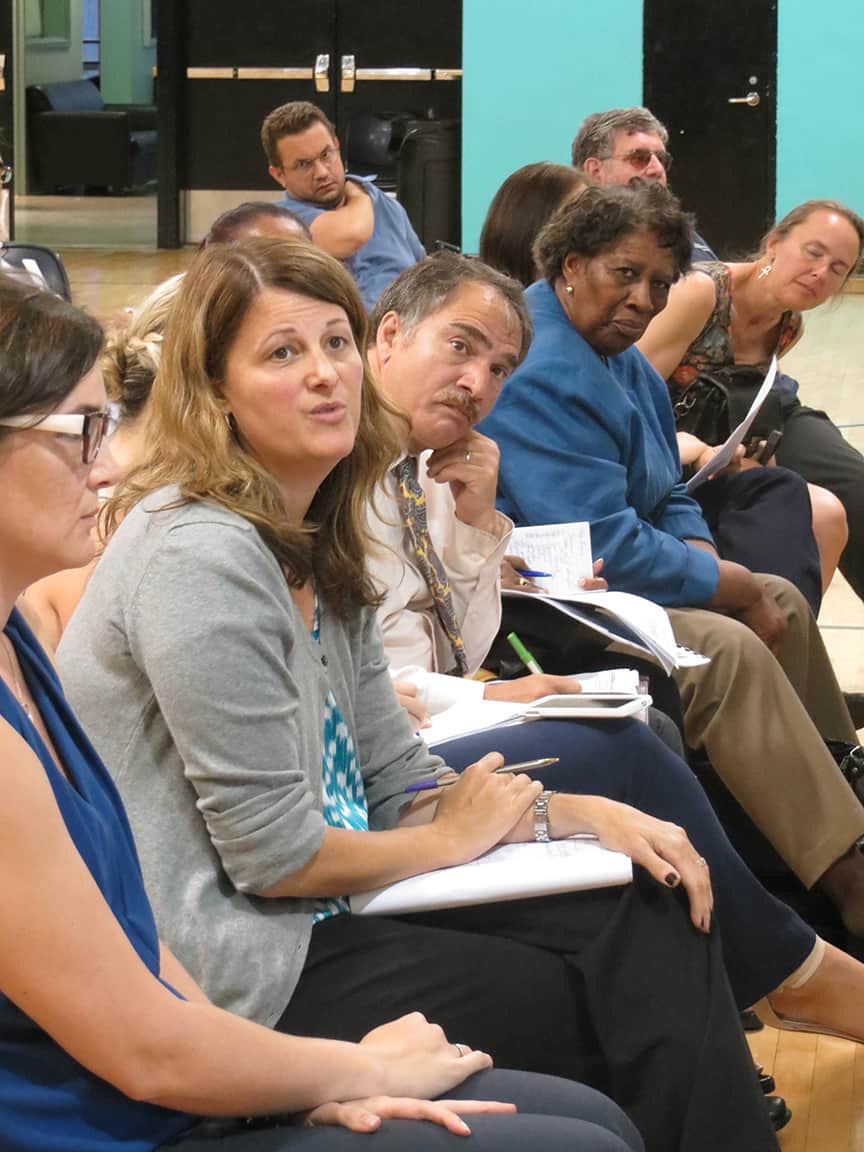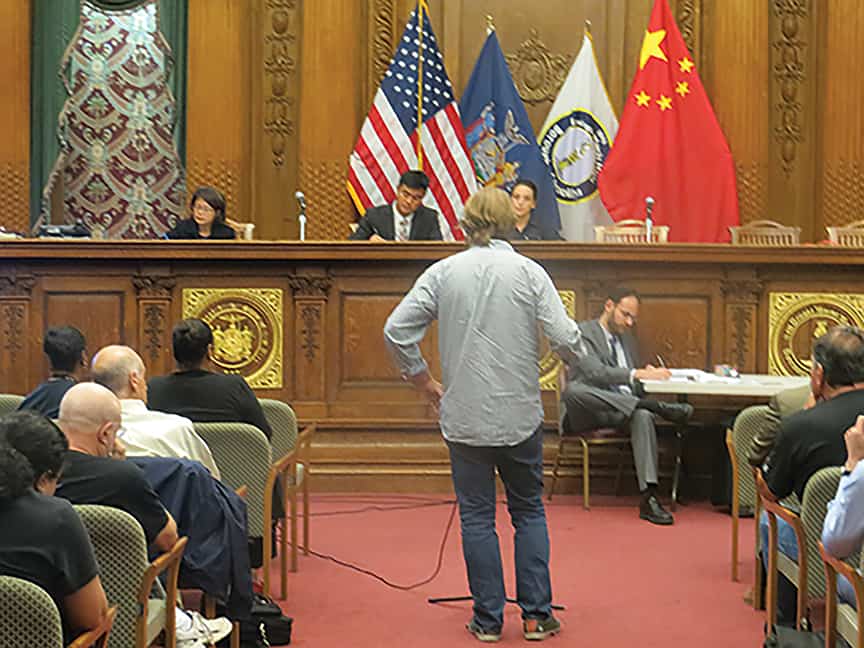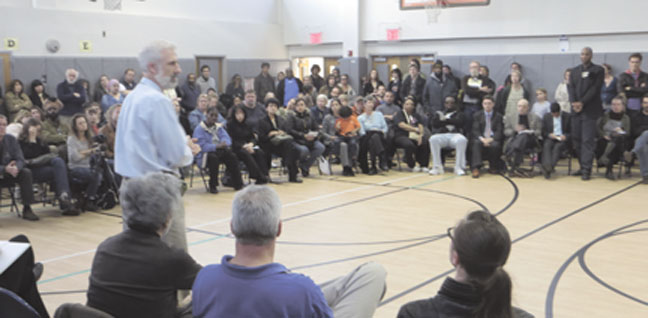
There has never been more uncertainty about the future of our federal government in my lifetime, than right now.
In 1980 Ronald Reagan gave an inaugural address that included the phrase, “government is not the solution, it is the problem.”
That same speech also included a very powerful, upbeat message, as follows:
“I believe we, the Americans of today, are ready to act worthy of ourselves, ready to do what must be done to ensure happiness and liberty for ourselves, our children, and our children’s children. And as we renew ourselves here in our own land, we will be seen as having greater strength throughout the world. We will again be the exemplar of freedom and a beacon of hope for those who do not now have freedom.”
It is the first sound bite that propelled a generation of Americans into believing that our government is the enemy.
We have an incoming administration that seems bent on eliminating as much government as possible, including agencies regulating the environment and business practice. Immigrant and reproductive rights are also threatened.
We at the Star-Revue believe that now more than ever, local governance must protect our interests. However, that can only be accomplished with an active and involved citizenry. It is our job as community journalists to provide information that can be used to demand government, as Reagan said, does “what must be done to ensure happiness and liberty for ourselves, our children, and our children’s children.”
With that in mind, we present four big stories from our pages in 2016 which illustrate the power of local constituencies in influencing and redirecting government to protect our interests.
Oxford Nursing Home

A year ago Red Hookers were pondering the results of Community Board 6 (CB6) actions regarding a proposed zoning change that would allow The Oxford Nursing Home to build a for-profit nursing home on a lot next to Pioneer Works. The building would have towered over all adjacent structures.
A December 2015 CB6 committee meeting held at PS 676 brought out a large crowd, where the Brooklyn Chamber of Commerce and members of the 1199 union representing nursing home workers spoke in favor. A large number of community residents spoke against. The committee voted the proposal down.
A week later, however, the full CB6 flipped overturned the committee’s recommendation. A member from Park Slope told us that we ought to “grow up” and accept change in the form of large buildings. Park Slope is protected against large developments as they are a landmarked community, with any new building restricted by law to six stories.
The next step in the process was a public meeting in Borough Hall hosted by Borough President Eric Adams. It was scheduled right before Christmas, but that did not prevent a large Red Hook contingent from attending. The meeting was made memorable by a question from Adam’s Deputy, Diana Reyna, in reference to the Oxford purchase of land not zoned for a nursing home.
“Why did you buy in a manufacturing area? Why did you buy the land if it was not zoned right? Did you even consider other locations?”
It was a question that went unanswered by the Oxford legal team.
Councilman Carlos Menchaca arranged a follow up meeting with Adams and his staff. It took place at the Red Hook library on Wolcott Street. At this meeting Adams listened carefully to proponents for and against. Both East and West Tenant Association presidents spoke in favor – saying that the development would bring a needed nursing home as well as jobs into the community. Others reiterated the inappropriate character of the proposed institution to the neighborhood.
A salient and previously unsaid point against the project was made by Van Brunt Street resident Alexandros Washburn, who pointed out that the location was in a FEMA flood zone, and in every instance of an upcoming major storm, the nursing home residents would have to be evacuated. Bad outcomes can often occur when sick, elderly people are forced to leave their location. The question then became why build a nursing home in a potentially dangerous area.
In March the Borough President’s report came out against the project. They did not have the final say, so they also included a series of conditions, including height and density restrictions, to be met if the City Council approved the proposal.
In May, based upon the recommendation of Councilman Menchaca, the proposal was defeated in the City Council. As he himself wrote in our June issue:
“I took the decision to support or oppose this development very seriously. At many meetings beyond the required land use hearings, I listened to the developer, Red Hook residents, workers, resilience experts, and local business operators. Weighing all the benefits and risks, the project proved to be unsafe and wrong for Red Hook’s long-term best interests.”
Indeed, without the support of an elected official listening carefully to their constituents, dangerous and out of place things would be placed in communities all the time. Older Red Hookers remember many fights about waste transfer stations which the Giuliani administration kept trying to locate here – disproportionately to other New York communities.
But having an elected official who listens does no good if we do not use our voice.
Strong Place Daycare

In March we reported on the potential closing of a valuable Red Hook resource, the city funded Strong Place for Hope Day Care facility. The site’s landlord was threatening to sell the building, at 595 Clinton Street, because the city would not fund necessary repairs. The day care serviced over 100 children of lower-income families unable to pay for a private service.
A meeting discussing strategies for keeping the center open was attended by City Councilman Menchaca. A deadline of March 25 was set for the closing of Strong Place – the only hope was for the city to purchase the building.
We reported in April that Menchaca’s office was able to convince the city to place a non-refundable deposit while negotiations to purchase the building were taking place. This allowed the deadline to be extended.
David Estrada, Menchaca’s chief of staff, said at the time that “a child of one of the employees in the councilman’s office went to Pre-K there. This is a neighborhood institution. It is extremely important. That is why we are going to the max to try to protect the school.”
In our June issue, we reported that the city was indeed in the process of purchasing the building. Strong Place Executive Director Lorraine Pennisi said of the success, “This was really a combined effort of the community, the families, and our local politicians. It was Councilman Carlos Menchaca, Councilman Stephen Levin. It was the Borough President, you know, everybody was petitioning the mayor’s office. I don’t believe this could have been done without the mayor’s office getting involved in this as well. “
She continued, “The parents are so, so, so happy. We also provide employment to people in the community. We are really a part of this community. We love what we do and we are very happy to be able to continue to be able to serve the families.”
FEMA Money for NYCHA

Over the course of the history of this newspaper, we have attended numerous NYCHA meetings at the Miccio Center where we saw little real achievement. Over and over again, tenants voiced the same complaints, getting the same response – we’d like to fix things up, but we don’t have the money to do it.
One of the effects of Hurricane Sandy has been to bring money to NYCHA. After the storm, Democrats in congress were able to allocate almost $48 billion to New York and New Jersey for storm relief. Of that money, NYCHA received $3.2 billion, and aided by Congresswoman Nydia Velazquez, almost $440 million was directed to the Red Hook Houses.
Armed with this money, NYCHA did the right thing and hired first class architects and engineers. In our March issue, we published a story titled “Best NYCHA meeting ever.”
We wrote:
“Instead of having to listen to NYCHA employees who sometimes seem to talk down to residents, this presentation was made by members of a design team noticeably eager to be part of an improvement in the lives of residents. They actually referred to the development as a “campus” – a term more often used for more upscale groups of buildings, such as colleges or Google’s offices.”
What especially impressed us was that much of the design team was actually there to meet tenants and actually talk to the neighborhood – and seemed excited at the prospect of improving things. We wrote:
“It was gratifying that suggestions made by residents at previous meetings were actually heard and incorporated into the design. These include a nicer walk to Smith and 9 Street, keeping Centre Mall as open space, friendlier and better lighting, the playground upgrades, and no loss of parking.”
In October, reporter Noah Phillips went to visit the architectural firm responsible for the design, Kohn Pederson Fox Associates (KPF). He spoke to Jill Lerner, in charge of the Red Hook project, who told him:
“We decided that Red Hook was where we felt we could make the biggest contribution. Red Hook’s a really interesting changing community. The Houses have a very interesting footprint architecturally, two parts that were built in different times, and the campus has architectural integrity. In addition it has a beautiful tree canopy, and it has a lot of landscape potential. We felt this would be something that we could really build on, leveraging the FEMA dollars to make a better and more resilient community.”
The FEMA money can only be used for resiliency related improvements, and not for things such as improved elevators or mold abatement. Devin Ratcliff, KPF’s project manager, said that nonetheless, “one of things that we really made a strong effort to do was to make sure that everything funded by FEMA that is part of the project benefits the residents of NYCHA on a day-to-day basis.”
These include power plants, playgrounds, and a landscape that promotes community as opposed to isolation.
KPF promises continuing community outreach, and NYCHA has already held job fairs with the promise of local hiring as construction begins – something else demanded by residents.
Commuter Ferry

In August 2015, the New York City Economic Development Corporation (EDC) shocked much of Red Hook by announcing that a new Red Hook commuter ferry stop would be located either at the far end of Van Brunt Street or at Valentino Pier. The ferry service, which will connect much of southern Brooklyn to Manhattan and even the Bronx, is scheduled to commence sometime in 2017.
Red Hookers turned out in droves at CB6 hearings as well as Brooklyn Borough Hall and St. Francis College to try and make EDC understand the folly of those locations – especially when the underutilized and protected Atlantic Basin was available.
In our May article, titled “Ferry Location still up in the air,” we quoted Time Gilman-Sevcik, a Red Hook resident, saying:
“The community is unanimous in its displeasure of the EDC idea.”
He went on to say that the Atlantic Basin is one block from the bus and two blocks from public housing. EDC’s chosen location featured ice floes, choppy water and extreme winds. He called Atlantic Basin the perfect location due to its centrality in the neighborhood (off of Pioneer Street and a quick walk from the Red Hook Houses). He also said the cost might be less, as ferries could dock right by the land, eliminating the need for any gangway or floating barge.
The EDC announced their decision on July 20, and in yet another community victory, decided to dock the ferries at the Atlantic Basin.
“Atlantic Basin has the potential to become a vibrant community asset that highlights cultural resources like Portside and Pioneer Works while serving as an inter-modal transit hub,” wrote Councilman Menchaca in our August edition. He continued:
“I congratulate the Red Hook residents and business operators who dedicated their time and expertise analyzing various EDC-proposed ferry landing locations.”
The importance of local
These four stories, covered in detail last year in our pages, all demonstrate that a community that bands together can be successful at achieving positive outcomes. Through local efforts – including that of our local representatives – we were able to save a needed school, block an unwanted development, locate a ferry in a sensible spot and take part in the creation of a revitalized Red Hook Houses we can all be proud of.
The work doesn’t stop. Cities are always in transition, and a well-informed community is vital in ensuring that our neighborhood evolves with intention, rather than through the de facto machinations of exogenous forces.
Rest assured that the Red Hook Star-Revue will continue chronicling this tale in the upcoming year.









